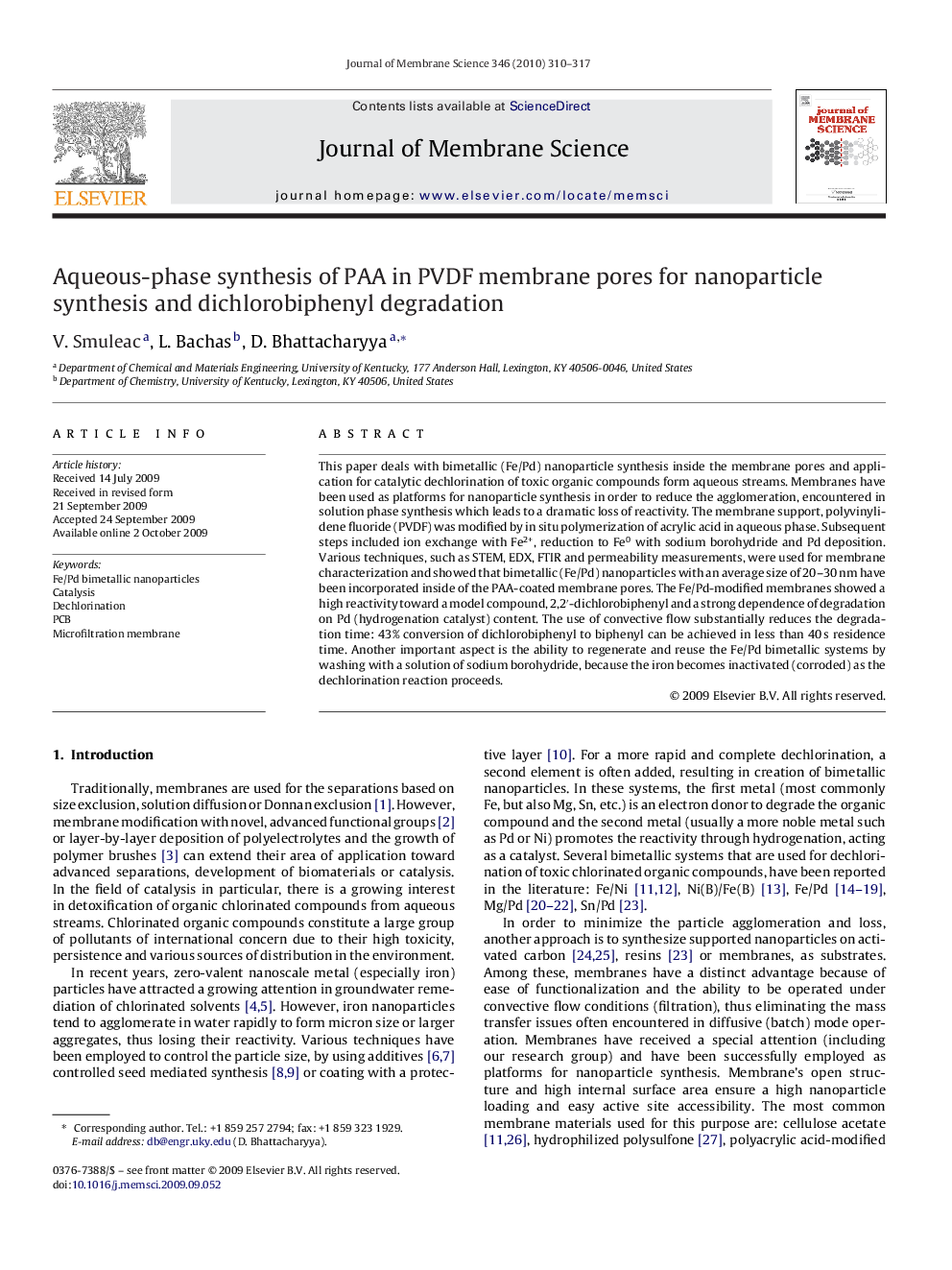| Article ID | Journal | Published Year | Pages | File Type |
|---|---|---|---|---|
| 636818 | Journal of Membrane Science | 2010 | 8 Pages |
Abstract
This paper deals with bimetallic (Fe/Pd) nanoparticle synthesis inside the membrane pores and application for catalytic dechlorination of toxic organic compounds form aqueous streams. Membranes have been used as platforms for nanoparticle synthesis in order to reduce the agglomeration, encountered in solution phase synthesis which leads to a dramatic loss of reactivity. The membrane support, polyvinylidene fluoride (PVDF) was modified by in situ polymerization of acrylic acid in aqueous phase. Subsequent steps included ion exchange with Fe2+, reduction to Fe0 with sodium borohydride and Pd deposition. Various techniques, such as STEM, EDX, FTIR and permeability measurements, were used for membrane characterization and showed that bimetallic (Fe/Pd) nanoparticles with an average size of 20-30Â nm have been incorporated inside of the PAA-coated membrane pores. The Fe/Pd-modified membranes showed a high reactivity toward a model compound, 2,2â²-dichlorobiphenyl and a strong dependence of degradation on Pd (hydrogenation catalyst) content. The use of convective flow substantially reduces the degradation time: 43% conversion of dichlorobiphenyl to biphenyl can be achieved in less than 40Â s residence time. Another important aspect is the ability to regenerate and reuse the Fe/Pd bimetallic systems by washing with a solution of sodium borohydride, because the iron becomes inactivated (corroded) as the dechlorination reaction proceeds.
Related Topics
Physical Sciences and Engineering
Chemical Engineering
Filtration and Separation
Authors
V. Smuleac, L. Bachas, D. Bhattacharyya,
